Hardwood flooring stain help
revwoods_sw
6 years ago
Featured Answer
Sort by:Oldest
Comments (20)
Uptown Floors
6 years agoBeth H. :
6 years agoRelated Discussions
Help picking a floor stain color for red oak hardwoods!?
Comments (4)Hi John, do you have any photos of the space you could post? That might be helpful. In general, it's trickier to make wood floors work with wood stained cabinets, but I've done it. Since you don't want reddish floors, I'd aim for a cooler brown - more towards a walnut. I would NOT do ebony floors; those super-dark floors are impossible to keep looking clean. They show dust, lint, grass, etc. Also, what stain product is your contractor using? Most come in pre-mixed colors. That may determine the palette you have to choose from. Other stains can be tinted or adjusted if needed. Adding green to a stain color, for example, will help cut the red of the oak floors. You have to go easy though, you don't want to end up with a noticeable green tone. You're welcome to email me directly if you want more info - I don't check messages on here very often. Thanks Info@PaintColorHelp.com...See MorePLEASE HELP ME PICK OUT A STAIN FOR REDOAK HARDWOOD FLOORING
Comments (1)These are the pictures of the flooring...See MoreHardwood floors - Stain color help!
Comments (7)You don't want to pick the floor color in isolation. It has to work with the elements you are not going to change. Are you keeping the wood beams? Are you keeping the exposed brick? Are you planning on painting? Do you already own furniture that you will be using long term or will you be buying new in the next few years? I suggest using some online or phone apps where you can upload the picture of the room and change flooring materials - test different looks in your room and decide what color you are aiming for. I think that the wood beams and red brick make your space unique and wonderful, so I would use that to plan the rest of the space (flooring stain, paint colors, furnishings), but you need to decide what you love and how to make it work in your home....See MoreHickory hardwood flooring stain options… please help!
Comments (1)Get more than one opinion . Hickory is very easy to work with once you know how. And after a good sanding, hickory takes stain really well. But that's the key. You need to sand it really well. To open up the pores, start sanding with heavy grit sandpaper - we suggest starting with 100- grit....See Morerevwoods_sw
6 years agoUser
6 years agorevwoods_sw
6 years agoQuality Granted
4 years agoG & S Floor Service
4 years agoQuality Granted
4 years agoQuality Granted
4 years agoG & S Floor Service
4 years agoQuality Granted
4 years agoQuality Granted
4 years agoG & S Floor Service
4 years agolast modified: 4 years agoSJ McCarthy
4 years agoQuality Granted
4 years agoQuality Granted
4 years ago
Related Stories

MATERIALSWhat to Ask Before Choosing a Hardwood Floor
We give you the details on cost, installation, wood varieties and more to help you pick the right hardwood flooring
Full Story
REMODELING GUIDESContractor Tips: Smooth Moves for Hardwood Floors
Dreaming of gorgeous, natural wood floors? Consider these professional pointers before you lay the first plank
Full Story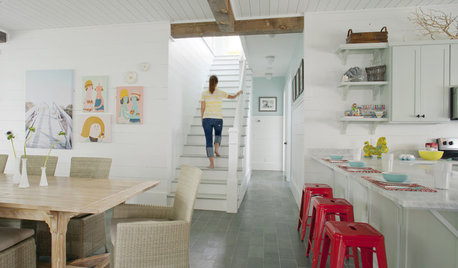
REMODELING GUIDESTile Floors Help a Hot Home Chill Out
Replace your hot-weather woes with a cool feel for toes when you treat your floors to deliciously refreshing tile
Full Story
HOUSEKEEPINGHow to Clean Hardwood Floors
Gleaming wood floors are a thing of beauty. Find out how to keep them that way
Full Story
REMODELING GUIDESTransition Time: How to Connect Tile and Hardwood Floors
Plan ahead to prevent unsightly or unsafe transitions between floor surfaces. Here's what you need to know
Full Story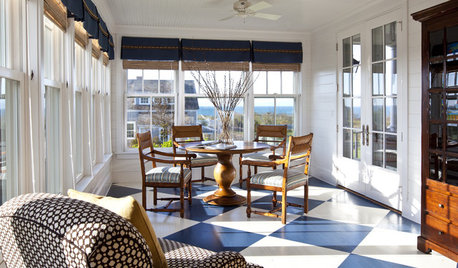
FLOORSHow to Paint Your Hardwood Floors
Know how to apply nail polish? Then you can give your wooden floors a brand-new look
Full Story
REMODELING GUIDESYour Floor: An Introduction to Solid-Plank Wood Floors
Get the Pros and Cons of Oak, Ash, Pine, Maple and Solid Bamboo
Full Story
REMODELING GUIDESWood Floor Care: Polish Your Skills
Help your wood floors stay gorgeous by learning how to keep stains, dullness and warping at bay
Full Story
REMODELING GUIDESDesigner Confessions: Torn Between Wood Floors
19 Photos to Help You Choose a Wood Floor Finish
Full Story
HOUSEKEEPINGHow to Clean Grout — Stains and All
If your grout is grossing you out, this deep-cleaning method will help it look new again
Full Story


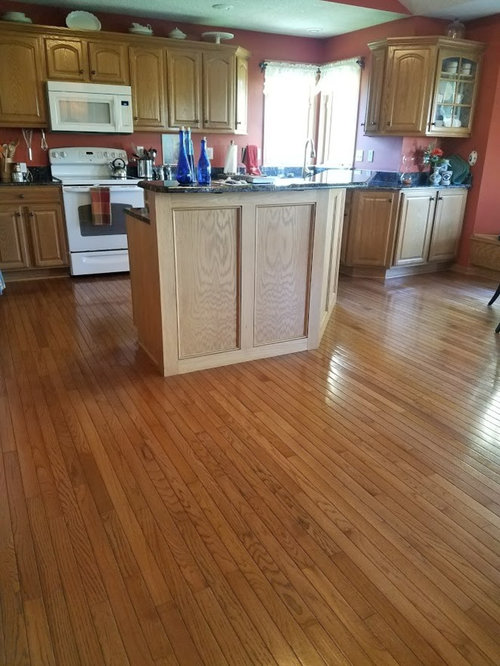
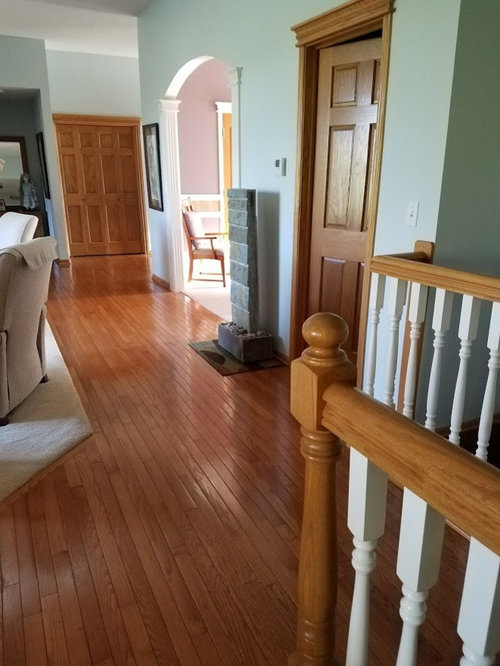
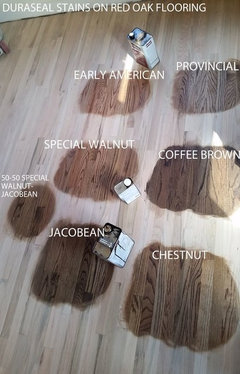



jhmarie